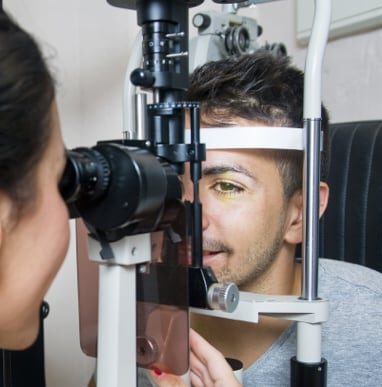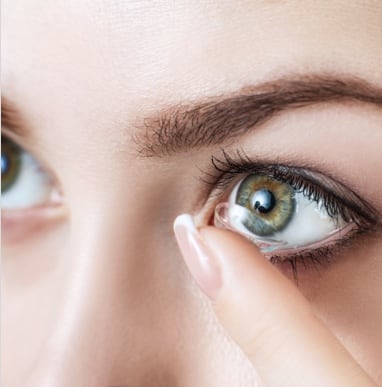Healthy vision is one of the many things diabetes can harm if it isn’t carefully controlled.
This is true for both type 1, type 2, and even gestational diabetes (which works like type 2 while it lasts). With diabetes, the risk of developing a number of eye diseases goes up, including cataracts, diabetic macular edema (DME), diabetic retinopathy, and glaucoma. If you combine these diseases under the umbrella term “diabetic eye disease,” that makes diabetes a worldwide leading cause of blindness.
How Diabetes Works
Having type 2 or gestational diabetes means that the body is unable to effectively use insulin to regulate blood sugar. Type 1 means that the body cannot produce enough (or any) insulin to begin with. When diabetes isn’t carefully managed, it results in periods of dangerously high blood sugar, which feeds harmful bacteria and makes the blood more acidic. So how does this impact eyes?
Diabetes and Cataracts
A diabetic person is as much as five times more likely to develop cataracts than someone without diabetes. Why? Because high blood sugar can make the lens of the eye swell and cause opaque proteins to accumulate there, which turns it cloudy. Thanks to modern cataract removal surgery, however, cataracts are very treatable.
Diabetic Retinopathy and Macular Edema
When the blood is more acidic from high blood sugar, it can actually damage blood vessels. This is a big problem for the tiny capillaries that nourish the retina at the back of the eye. Diabetic retinopathy is when those capillaries leak. The body attempts to repair the damage by growing new blood vessels, but these are less stable and even more likely to leak than the old ones. There aren’t always symptoms at first, but a common one is dark blotches or floaters in the field of vision.
About 10% of people who get diabetic retinopathy eventually develop its cousin, DME, which is the buildup of fluid in the macula (the part of the retina that gives us our detailed central vision). The fluid distorts vision and washes out colors. It may need surgical treatment to restore more normal vision.
Diabetes and Glaucoma
It might surprise you to learn that the fluid inside our eyes doesn’t just sit there for our entire lives. Our eyes are actually replacing that fluid bit by bit all the time, and it’s an important part of eye health. Glaucoma is what happens when that process gets blocked and pressure builds against the optic nerve until it causes damage (which can be as severe as permanent blindness). A diabetic is more likely to develop glaucoma, and it doesn’t always have obvious symptoms at first. The best way to catch it is with regular eye exams!
Eye Exams Can Save Your Sight
Regular eye exams are particularly important for helping diabetics protect their eyesight, because we can keep an eye out for early symptoms and reduce the risk of blindness by up to 95%. However, the most important thing is managing the diabetes. If the patient can keep their blood sugar as close to normal as possible, then they can reduce their risk levels for these eye diseases down to something closer to what people without diabetes experience. From there, we do the rest!












